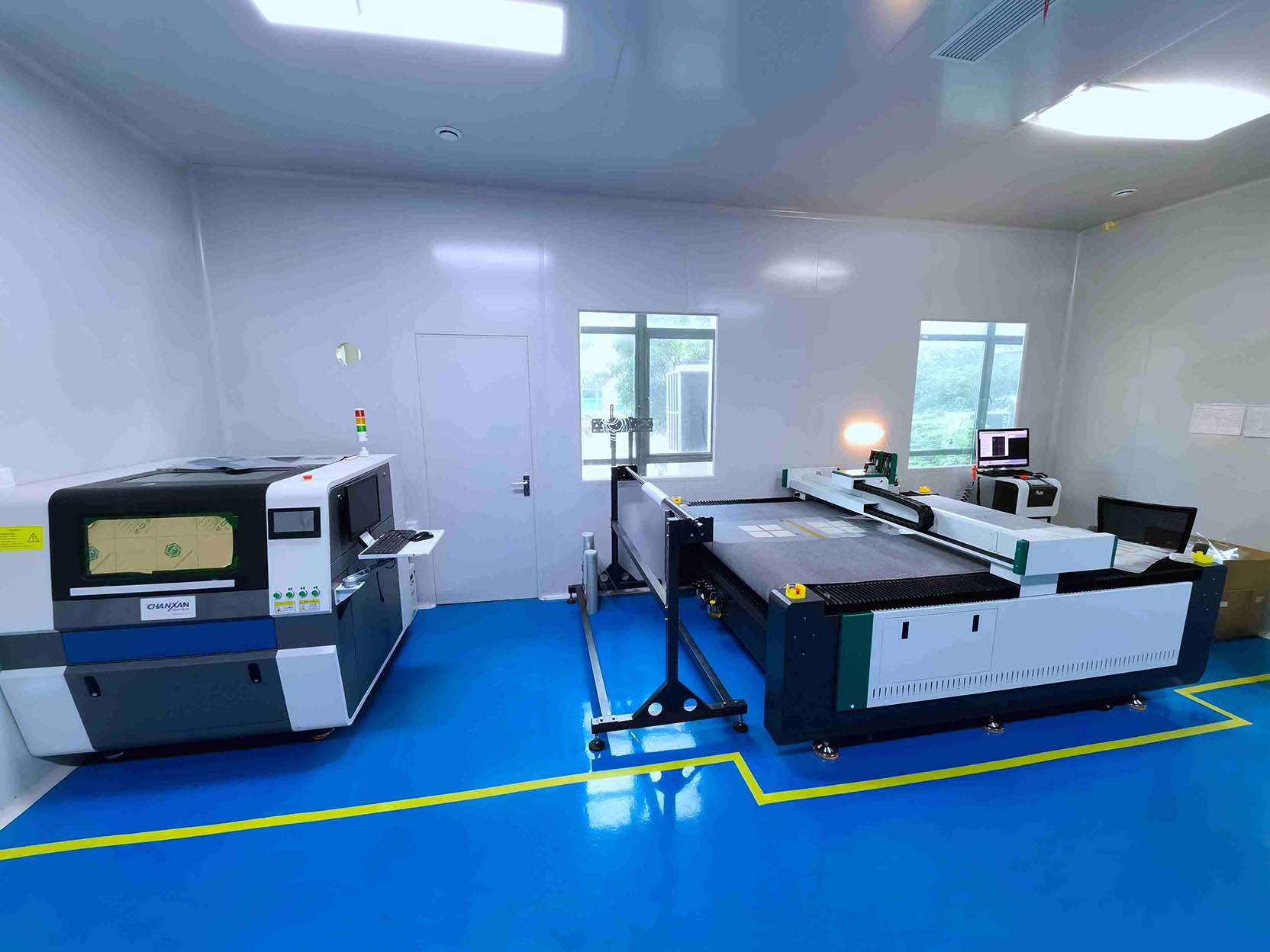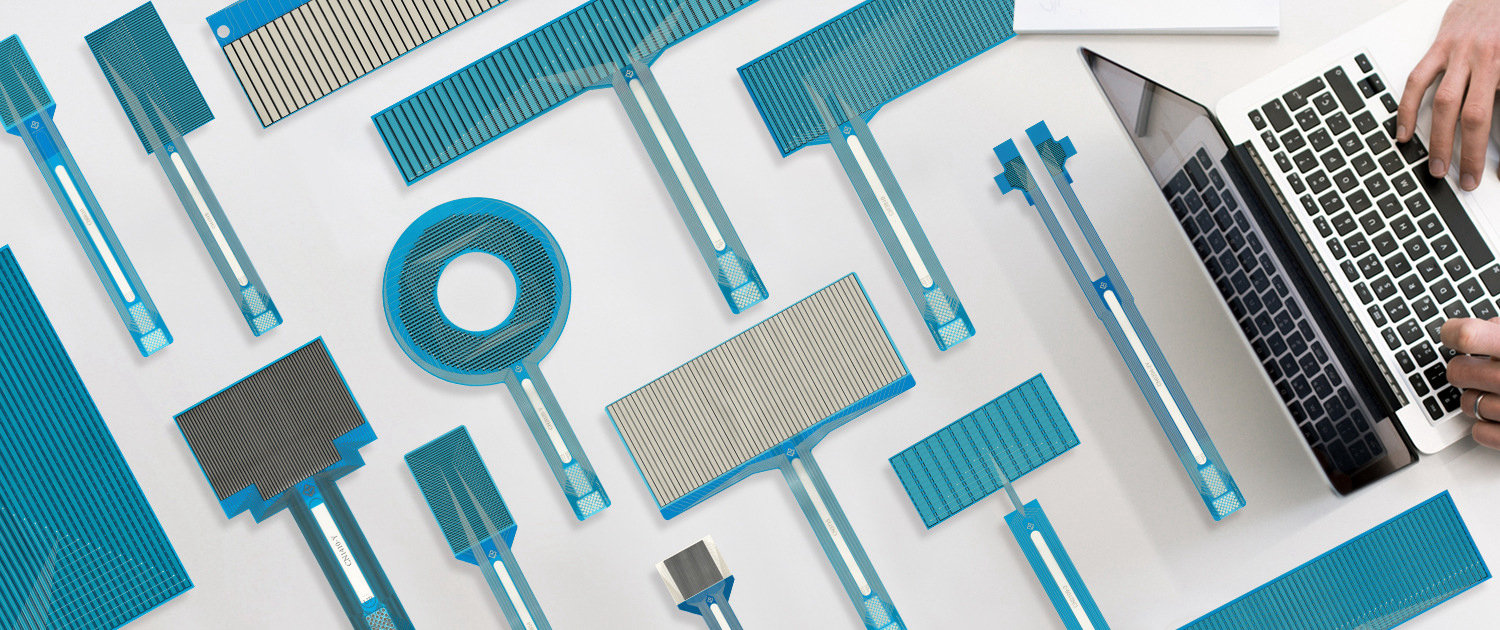简介 & 流程
CNSCAN提供矩阵式薄膜压力定制开发服务。从设计到生产到测试的一站式服务。定制周期最快7个工作日时间既可以完成。
- 设计阶段(传感器线路设计,基材选择,量程选择,厚度要求等)
- 生产阶段(浆料选择,生产工艺选择,生产数量)
- 测试阶段(均一性检测,一致性检测,完整性检测,标定误差)
Introduction & Process
CNSCAN provides matrix film pressure customization development services. One-stop service from design to production to testing. The customization cycle can be completed within 7 working days at the earliest.
- Design phase (sensor circuit design, substrate selection, range selection, thickness requirements, etc.)
- Production stage (paste selection, production process selection, production quantity)
- Testing phase (uniformity checking, consistency checking, integrity checking, calibration error)
1.设计(Design)
1.沟通确认草图( Communicate and confirm the sketch.)
通过和客户沟通了解客户需要定制传感器的感测面积,感测点数量,传感器的使用量程,和测试环境。来确定传感器的设计草图,把设计草图给客户进行初步确认,以及客户提出意见进行更改。最终和客户确认传感器扫图。
Communicate with the customer to understand the sensing area, the number of sensing points, the use range of the sensor, and the test environment of the customer need to customize the sensor. To determine the design sketch of the sensor, and give the design sketch to the customer for preliminary confirmation, and the customer puts forward opinions for change. Finally confirm the sensor sweep with the customer.
2.CAD设计传感器网板(CAD design sensor network board.)
传感器通过丝网印刷需要提前准备网板。包括银浆层网板,碳浆层网板,绝缘层网板,胶水层网板。以及确定传感器的制作工艺,是边缘走线,还是内部走线。最终和客户确认传感器制作网板细节。
The sensor through screen printing needs to prepare the screen plate in advance. Including silver paste layer network board, carbon paste layer network board, insulation layer network board, glue layer network board. And determine the fabrication process of the sensor, whether it is an edge line or an internal line. Finally, confirm the details of the sensor production board with the customer.
3.确定传感器基材(Determine the sensor substrate)
不同基材有各自的使用条件和制作成本。现阶段一般采用PET,PTU,PI等基材。包括传感器基材厚度等细节要求都需要在这个阶段和客户沟通完全。保证制作出来的传感器能完全符合客户要求。
Different substrates have their own conditions of use and production costs. At this stage, PET,PTU,PI and other substrates are generally used. Detailed requirements, including sensor substrate thickness, need to be fully communicated to the customer at this stage. Ensure that the produced sensor can fully meet customer requirements.
2.制作(Make)
1.确定浆料(Determine the slurry)
通过和客户沟通传感器使用量程和使用温度,来制作最合适的浆料来印刷传感器。制作传感器的银浆和碳浆是CNSCAN团队亲自定制开发。
To make the most suitable paste to print the sensor by communicating with the customer about the range and temperature of the sensor. The silver paste and carbon paste used to make the sensor were customized and developed by the CNSCAN team.
2.确定制作工艺(Determine the manufacturing process)
通过确定浆料和基材以及网板来定制传感器的生产工艺。匹配最合适的生产工艺来最大化的提高传感器的性能以及良品率。CNSCAN有2台高效的生产设备,可以满足大量印刷的能力。占地面积1500平米。
The production process of the sensor is customized by determining the slurry and substrate as well as the mesh plate. Match the most appropriate production process to maximize the performance and yield of the sensor. CNSCAN has 2 efficient production equipment, which can meet the capacity of mass printing. Covers an area of 1500 square meters.
3.贴合、覆膜和裁切(Laminating, laminating and cutting)
印刷后的半成本传感器需要通过自动贴合机贴合,覆膜机覆膜以及激光切割机切割,来最终生产出传感器成品。CNSCAN 有先进的贴合机,覆膜机,激光切割机。满足大量高效的生产需求。
After printing, the half-cost sensor needs to be laminated by an automatic laminating machine, laminating by a laminating machine and cutting by a laser cutting machine to finally produce the finished sensor. CNSCAN has advanced laminating machine, laminating machine, laser cutting machine. Meet a large number of efficient production needs.
3.检验(inspection)
1.表面检测(Surface detection)
传感器外表以及接口,四边胶水检测。观察是否有划痕,接口氧化,胶水开胶等外观检测。
Sensor appearance and interface, glue detection on four sides. Observe whether there are scratches, interface oxidation, glue opening and other appearance detection.
2.行列点检测(Row and column point detection)
通过接上采集系统,观察传感器的每一个点的信号是否有缺失以及MAP文件的准确定。保证没有出现断行,断列,串行等基础传感器问题。这个阶段不涉及传感器每个点的性能,属于初步检测性能阶段。对每一个传感器编号以及建立和保留视频档案。
By connecting the acquisition system, observe whether the signal of each point of the sensor is missing and the quasi determination of the MAP file. Ensure that there is no broken line, broken column, serial and other basic sensor problems. This stage does not involve the performance of each point of the sensor and belongs to the preliminary detection performance stage. Number each sensor and create and retain a video archive.
3.均一性检测(Homogeneity test)
通过CNSCAN专门研发的气体压力装置对每一个传感器的点进行均一性检测,看是否出现红点,原始值差距过大等性能问题。保留性能优良的传感器。
Through the gas pressure device specially developed by CNSCAN, the uniformity of the points of each sensor is detected to see whether there are red points, large gaps in the original value and other performance problems. Keep sensors with good performance.
4.一致性检测(Consistency checking)
通过以上3次筛选,最终得到的传感器还需要进行压力机标定来保证每张传感器对应一个标定文件,给客户每一张传感器的一致性得到最好的保证。
Through the above three screening, the final sensor needs to be calibrated to ensure that each sensor corresponds to a calibration file, and the consistency of each sensor is the best guarantee for the customer.
生产设备 & 生产场地(Production equipment & Production site)
CNSCAN团队有自己生产传感器制作工厂,占地1500平米。包括浆料调试,印刷设备,裁切设备,检测设备等一站式完整的压力薄膜 传感器生产工厂。2条独立生产线,保证大量订单的稳定供货。传感器定制周期最短7个工作日完成。
CNSCAN team has its own sensor manufacturing factory, covering an area of 1500 square meters. Including slurry commissioning, printing equipment, cutting equipment, testing equipment and other one-stop complete pressure film sensor production plant. 2 independent production lines to ensure a large number of orders stable supply. The sensor customization cycle is completed in a minimum of 7 working days.



